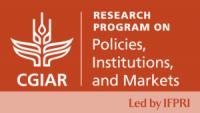The dashboard tracks stock-to-use ratios, highlighting market tightness and vulnerability to shocks by comparing current stock levels with historical averages.
Last update: November 2025
The stock-to-use ratio measures the level of stocks of a commodity relative to its total use, and it is an important indicator of the vulnerability of world food markets to shocks. When stock-to-use ratios are high, more supply is available in inventory, which enables countries to smooth consumption and even out prices in the case of a shock. Low stock-to use ratios increase the severity of price spikes and volatility.
In addition to providing a way to monitor stocks and production data, the dashboard provides an indication of tightness in markets by allowing users to compare stock-to-use levels to period averages. This provides a sense of whether stocks are above or below what might be considered normal levels.
Key messages
Data on stocks are a valuable complement to price data and the Food Security Portal’s Food Price Variability Early Warning System. There is a strong relationship between food commodity prices and stock-to-use ratios.
Stock-to-use ratios
Stock-to-use ratios serve as indicators of vulnerability to shortages and price spikes.
Implications of low stock-to-use ratios
When stock-to-use ratios are low, markets are likely tight and volatility in food prices more extreme.
Food price volatility
Food price volatility associated with low stock-to-use ratios affects farmers, traders, processors, and consumers – particularly poor consumers who spend a large share of their income on food.
The tool
The dashboard covers production, domestic consumption, ending stocks, and stock-to-use for major food commodities. Average and median values are calculated for the time periods defined by the user.
Underlying Data
The Production, Supply, and Distribution (PSD) database contains current and historical official USDA data on production, supply, and distribution of agricultural commodities for the United States and key producing and consuming countries.
Partners

The United States Agency for International Development

The Foreign, Commonwealth & Development Office (FCDO) of the Government of the United Kingdom
